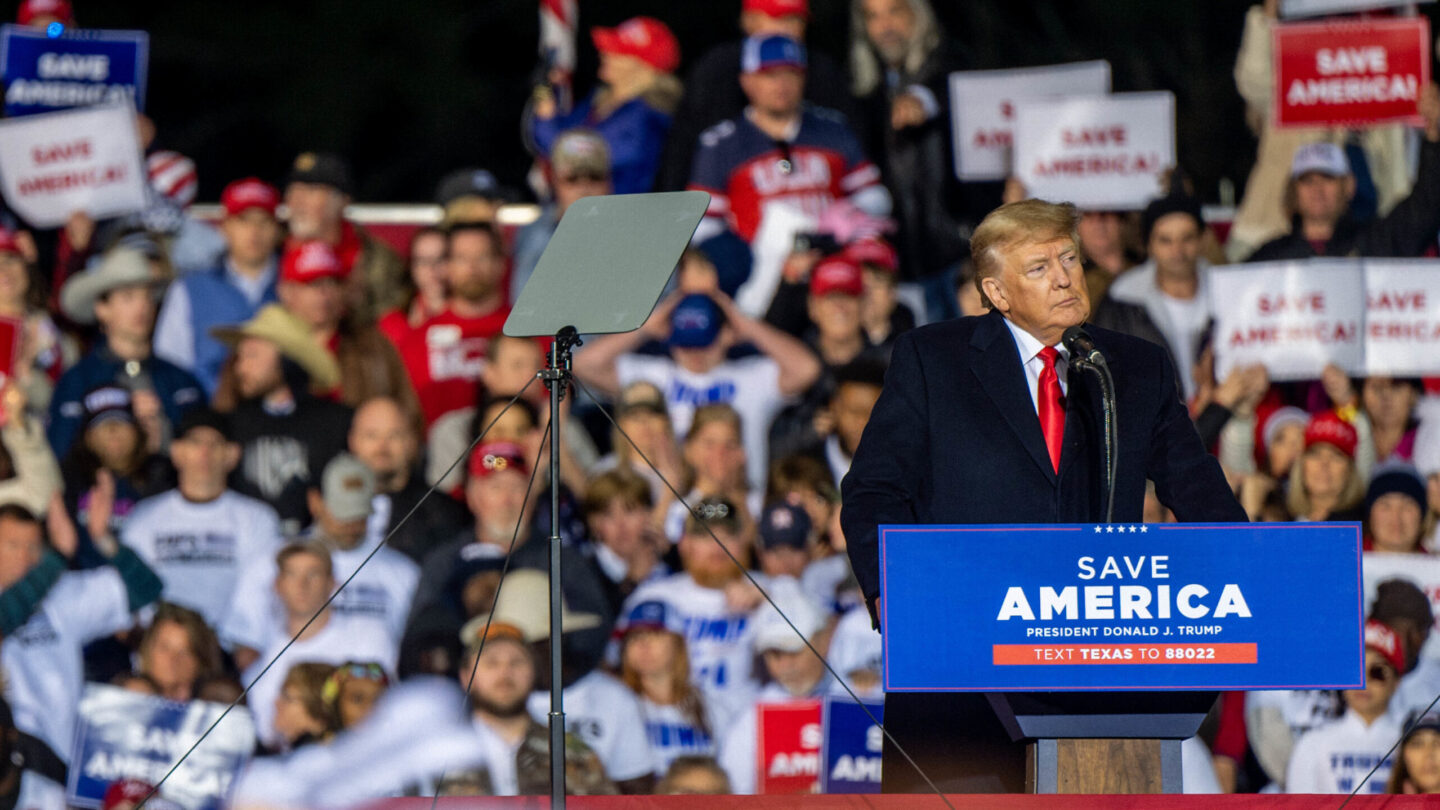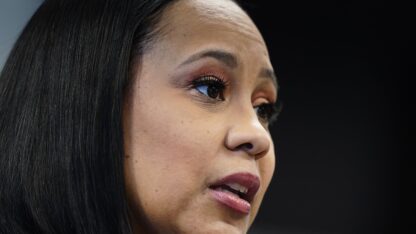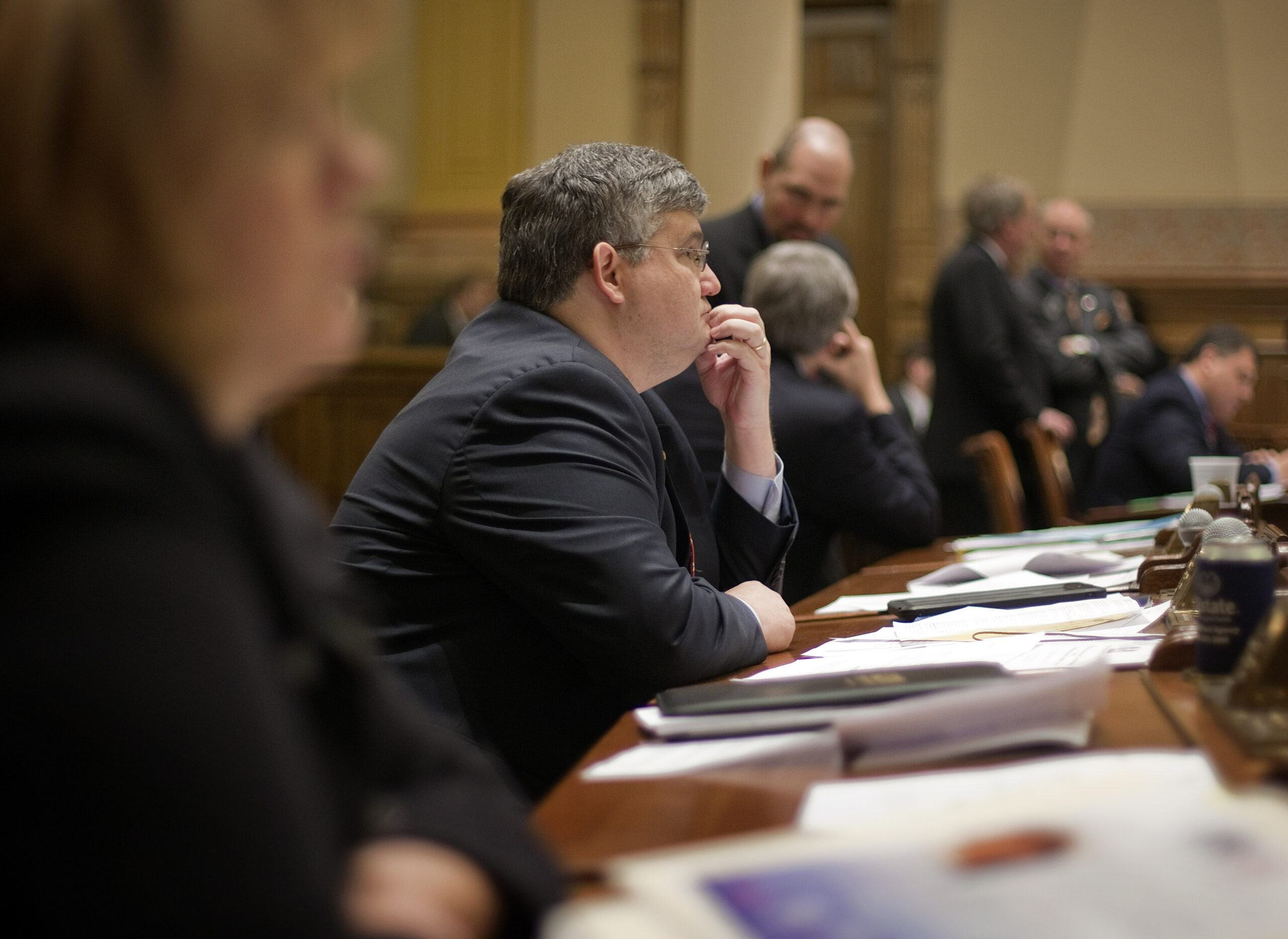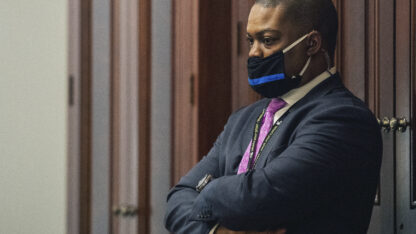With former President Donald Trump off mainstream social media, his messages aren’t as ubiquitous. It makes it harder for them to break through.
But in recent rallies and statements, Trump has seemed to escalate a message rooted in racism and lies.
Trump alleged during a rally in Texas over the weekend that Black prosecutors investigating him are “racist,” and he is again flirting with mob violence, calling for mass protests if they do anything he deems to be “wrong or illegal.”
And after teasing a 2024 run — “to take back that beautiful, beautiful house that happens to be white” — he said one of his actions as president could be to pardon those convicted as a result of their actions during last year’s insurrection at the U.S. Capitol. More than 750 people and counting have been charged with crimes.
“If I run and I win, we will treat those people from Jan. 6 fairly,” Trump said. “We will treat them fairly. And if it requires pardons, we will give them pardons, because they are being treated so unfairly.”
Trump ally Sen. Lindsey Graham, R-S.C., called Trump’s comments “inappropriate.” But Graham criticized Trump after the Capitol attack itself, only to wrap his arms around him again.
Tempered GOP criticism isn’t something that has cowed Trump, and neither has the violence that’s taken place in his name.
Instead, Trump is pouring gasoline on a fire of white grievance.
‘A nose for white victimhood’
Trump is undoubtedly the front-runner for the GOP nomination in 2024. Few Republicans on Capitol Hill dare cross the former president for fear of upsetting his feverish base of supporters.
That’s given Trump free rein to say what he wants with no significant checks.
Trump has pledged to play heavily in this year’s midterm elections and has endorsed dozens of candidates in his mold, particularly those who repeat his lies about the 2020 election that he lost.
But Trump’s ramped-up inflammatory rhetoric is also coming at a time when his knotted hold over the Republican base appears to be loosening some — and as he continues to be banned from mainstream social media platforms.
The constraint put on him helps explain Trump seeming to ratchet things up a notch, said Casey Kelly, a professor at the University of Nebraska-Lincoln, whose paper Donald J. Trump and the Rhetoric of White Ambivalence explored how Trump shifts between “overt” and “colorblind racism.”
“When you’re denied the normal ways in which you reach your demographic, you intensify to garner more attention,” Kelly said.
Plus, Kelly added, “The audience he’s trying to get is constantly agitated and upset. He always has a nose for white victimhood.”
Using race-based anger to motivate
Instead of conceding to President Biden, Trump stirred up a hornet’s nest of anger with false claims of nonexistent widespread voter fraud that led to the Jan. 6 attack at the U.S. Capitol.
Now he is contending with several open investigations related to his behavior after the election, his role in what happened Jan. 6 and how the finances of the Trump Organization were managed under his leadership.
Specifically, there are criminal investigations in New York — looking into his company’s finances, particularly the pattern and practice of allegedly wildly inflating and deflating the value of his properties when it suited his financial interests; and in Georgia — for his pressure campaign to overturn the results of the election he lost in the state by nearly 12,000 votes.
The three prosecutors with specific investigations in both states — the New York district attorney, the state attorney general and a Georgia DA — are all Black.
With that context, this is how Trump referred to them Saturday at his rally, while also wrapping in his election lie: “If these radical, vicious, racist prosecutors do anything wrong or illegal, I hope we are going to have in this country the biggest protests we have ever had in Washington, D.C., in New York, in Atlanta and elsewhere, because our country and our elections are corrupt. They’re corrupt.”
He’s already laying the groundwork to dismiss their work, just as he did months ahead of the election he lost fair and square.
And he’s doing it by questioning their motivations because of their race, just as he did nearly six years ago when he felt a judge was being unfair to him because of his “Mexican heritage.”
After Trump’s rally, Fulton County District Attorney Fani Willis wrote a letter to the FBI’s Atlanta field office requesting that it “immediately conduct a risk assessment of the Fulton County Courthouse and Government Center, and that you provide protective resources to include intelligence and federal agents.”
She also said “security concerns were escalated” after Trump’s rally and called his rhetoric “more alarming,” considering he floated pardons to Jan. 6 criminals.
It’s understandable that officials opposing Trump might be concerned about potential threats or violence considering how many have faced them — and that a rising number of Americans think violence against the government could sometimes be justifiable.
This is not the first example in recent weeks of Trump employing racist rhetoric.
2 examples — and some needed context:
1. A New York program for distributing antiviral coronavirus treatments, which are in limited supply, considers several risk factors for those who are most likely to suffer from severe illness. Health problems and race are among those considerations.
The Centers for Disease Control and Prevention notes “that since the start of the pandemic, people from racial and ethnic minority groups have experienced disproportionately higher rates of COVID-19-associated hospitalizations compared to non-Hispanic White people.”
Here’s how Trump distorted what New York is doing at a rally in Arizona earlier this month: “The left is now rationing life-saving therapeutics based on race, discriminating against and denigrating, just denigrating white people to determine who lives and who dies,” Trump said. “You get it based on race. In fact, in New York state, if you’re white, you have to go to the back of the line to get medical help. If you’re white, you go right to the back of the line.”
Whites going to the back of the line, being replaced, is very much in line with “white replacement theory.”
It’s gone from white supremacist fringe to growing in popularity with mainstream conservatives, and holds that there’s a plot to alter America’s racial identity, as Axios notes, “by methodically enacting policies that reduce white Americans’ political power.”
2. There was record-high turnout in the 2020 presidential election, with Biden winning 81 million votes and Trump getting 74 million, the most for any incumbent president. This came amid the pandemic, as voting options, including mail-in ballots, were expanded by states.
Yet, in an attempt to bolster his false claim that the election was “rigged,” Trump said in a statement on Jan. 6: “Does anybody really think that Biden beat Obama with the Black population in Swing State cities, but nowhere else?”
The implication: that there’s no way a white candidate could outdo a Black candidate with Black voters, despite the historic surge in turnout across the country.
Looking at swing state cities in Wisconsin, Michigan and Pennsylvania — three states Biden won in 2020 that Trump had in his column in 2016 — Biden got a marginally higher percentage than Barack Obama in Milwaukee County, a county with a significant Black population.
But it was only very narrowly — Obama got 67% in 2008 and 2012; Biden got 69%.
When it came to Wayne County (Detroit) and Philadelphia, however, Biden actually did worse than Obama in both places.
Biden’s record vote total could also be because, as NPR Morning Edition host Steve Inskeep pointed out to Trump in his curtailed interview: “If you’ll forgive me, maybe because the election was about you.”
Copyright 2022 NPR. To see more, visit https://www.npr.org.
9(MDAxODM0MDY4MDEyMTY4NDA3MzI3YjkzMw004))

9(MDAxODM0MDY4MDEyMTY4NDA3MzI3YjkzMw004))









